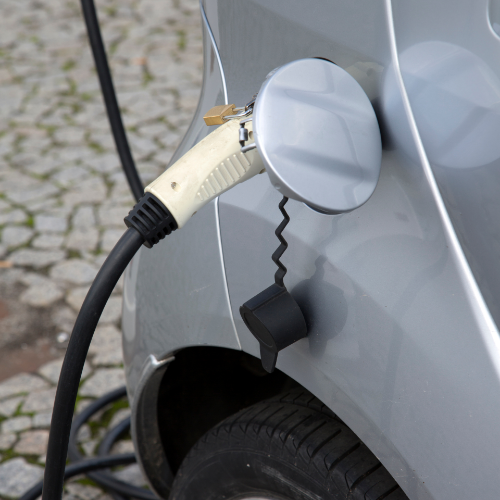TRANSPORT
The transportation sector is a large contributor to global carbon emissions. In Australia, the transportation sector is the second largest source of greenhouse gases, around 18% of emissions. Excess greenhouse gases in the atmosphere propel climate change and contribute to air pollution. This means that transportation has a direct impact on the planet and human health.
Shipping, air travel, trucks, rail, public transport, and cars are all examples of modes of transportation. Australia has some specific limitations to reducing emissions through transport. Australia has a large number of fuel polluting vehicles, and due to the size of the country, many travel large distances to reach their destinations. Public transportation ratios are also low, meaning there is a low share of trips purchased and used by passengers.
Read More
As an individual, household, or business, there are a multitude of resources and changes that can be used and made to create lasting environmental progress in terms of transportation.
1. Avoid Emitting Transport Options
When at all possible, choose a mode of transportation that does not emit greenhouse gases. Walking, biking, rollerblading are a fantastic and effective way to reduce greenhouse gas emissions. Encourage everyone who can to travel work using an emission free or low emission commute once per week. Not only does the planet benefit, but we all benefit on a physical and mental level from increased exercise and activity.
2. Switch to Low Carbon Vehicles
If other forms of emission free commuting are not always possible, consider switching your vehicle to a low or zero carbon emission model. Electric, hybrid, and high efficiency vehicles are great options. Businesses can consider changing their company vehicles in the same fashion.
Not only do electric, hybrid, and high efficiency vehicles reduce emissions, they come with some important financial advantages, including serious fuel savings and in some cases government incentives.
3. Focus on Your Fuel
Not all fuels are created equal. Different fuels need different resources and energy to be produced. Of course, avoiding carbon emissions altogether is the goal. Until we get there, choosing ethanol fuel blends is a more sustainable option in general. This is because ethanol is a renewable fuel source derived from plants. Another alternative is LPG fueled vehicles, cheaper to run and releasing half the emissions of petrol or diesel.
One step further in the future, ethanol powered vehicles will make a great environmental switch. Ethanol fuel vehicles produce lower carbon dioxide emissions, and the same or lower levels of hydrocarbon and oxides of nitrogen emissions.
4. Rideshare
The more people per trip, the better. Carpooling with friends, family, and coworkers to attend work, events, or run errands is a great way to maximize the efficiency while commuting. Another great way to reduce a personal carbon footprint is by ridesharing.
Ridesharing is a concept where different individuals share a vehicle. For example, GoGet is a car sharing service operating across Australia. The company outsources cars, vans and other vehicles cost effectively and similar to a rental service. This way, users only utilise a vehicle when they really need one, reducing the number of cars on the road and ultimately emissions.
5. Purchase Carbon Offsets
Perhaps one of the most accessible ways to tackle a carbon footprint is by purchasing carbon offsets for your household or business. Until we live in a 100% renewable society, purchasing carbon offsets are a great way to become more involved in sustainability.
Carbon credit calculators help you work out your annual carbon emissions and simplify how much greenhouse gas you need to offset. Carbon offsets are a direct purchase that can be made by individuals or businesses in order to offset their carbon output. The funds are then used for a range of environmentally positive projects. These initiatives can be anything from tree planting projects that absorb CO2 to renewable energy projects that divert CO2 emissions. You pick the project that best speaks to you and purchase the credits. Businesses can even deduct their carbon offsets on their taxes.
Your purchase directly funds positive environmental change and projects to combat climate change.
Resources
Read Less




Transport




The transportation sector is a large contributor to global carbon emissions. In Australia, the transportation sector is the second largest source of greenhouse gases, around 18% of emissions. Excess greenhouse gases in the atmosphere propel climate change and contribute to air pollution. This means that transportation has a direct impact on the planet and human health.
Shipping, air travel, trucks, rail, public transport, and cars are all examples of modes of transportation. Australia has some specific limitations to reducing emissions through transport. Australia has a large number of fuel polluting vehicles, and due to the size of the country, many travel large distances to reach their destinations. Public transportation ratios are also low, meaning there is a low share of trips purchased and used by passengers.
Read More
As an individual, household, or business, there are a multitude of resources and changes that can be used and made to create lasting environmental progress in terms of transportation.
1. Avoid Emitting Transport Options
When at all possible, choose a mode of transportation that does not emit greenhouse gases. Walking, biking, rollerblading are a fantastic and effective way to reduce greenhouse gas emissions. Encourage everyone who can to travel work using an emission free or low emission commute once per week. Not only does the planet benefit, but we all benefit on a physical and mental level from increased exercise and activity.
2. Switch to Low Carbon Vehicles
If other forms of emission free commuting are not always possible, consider switching your vehicle to a low or zero carbon emission model. Electric, hybrid, and high efficiency vehicles are great options. Businesses can consider changing their company vehicles in the same fashion.
Not only do electric, hybrid, and high efficiency vehicles reduce emissions, they come with some important financial advantages, including serious fuel savings and in some cases government incentives.
3. Focus on Your Fuel
Not all fuels are created equal. Different fuels need different resources and energy to be produced. Of course, avoiding carbon emissions altogether is the goal. Until we get there, choosing ethanol fuel blends is a more sustainable option in general. This is because ethanol is a renewable fuel source derived from plants. Another alternative is LPG fueled vehicles, cheaper to run and releasing half the emissions of petrol or diesel.
One step further in the future, ethanol powered vehicles will make a great environmental switch. Ethanol fuel vehicles produce lower carbon dioxide emissions, and the same or lower levels of hydrocarbon and oxides of nitrogen emissions.
4. Rideshare
The more people per trip, the better. Carpooling with friends, family, and coworkers to attend work, events, or run errands is a great way to maximize the efficiency while commuting. Another great way to reduce a personal carbon footprint is by ridesharing.
Ridesharing is a concept where different individuals share a vehicle. For example, GoGet is a car sharing service operating across Australia. The company outsources cars, vans and other vehicles cost effectively and similar to a rental service. This way, users only utilise a vehicle when they really need one, reducing the number of cars on the road and ultimately emissions.
5. Purchase Carbon Offsets
Perhaps one of the most accessible ways to tackle a carbon footprint is by purchasing carbon offsets for your household or business. Until we live in a 100% renewable society, purchasing carbon offsets are a great way to become more involved in sustainability.
Carbon credit calculators help you work out your annual carbon emissions and simplify how much greenhouse gas you need to offset. Carbon offsets are a direct purchase that can be made by individuals or businesses in order to offset their carbon output. The funds are then used for a range of environmentally positive projects. These initiatives can be anything from tree planting projects that absorb CO2 to renewable energy projects that divert CO2 emissions. You pick the project that best speaks to you and purchase the credits. Businesses can even deduct their carbon offsets on their taxes.
Your purchase directly funds positive environmental change and projects to combat climate change.
Resources
Read Less
Transport
The transportation sector is a large contributor to global carbon emissions. In Australia, the transportation sector is the second largest source of greenhouse gases, around 18% of emissions. Excess greenhouse gases in the atmosphere propel climate change and contribute to air pollution. This means that transportation has a direct impact on the planet and human health.
Shipping, air travel, trucks, rail, public transport, and cars are all examples of modes of transportation. Australia has some specific limitations to reducing emissions through transport. Australia has a large number of fuel polluting vehicles, and due to the size of the country, many travel large distances to reach their destinations. Public transportation ratios are also low, meaning there is a low share of trips purchased and used by passengers.
Read More
As an individual, household, or business, there are a multitude of resources and changes that can be used and made to create lasting environmental progress in terms of transportation.
1. Avoid Emitting Transport Options
When at all possible, choose a mode of transportation that does not emit greenhouse gases. Walking, biking, rollerblading are a fantastic and effective way to reduce greenhouse gas emissions. Encourage everyone who can to travel work using an emission free or low emission commute once per week. Not only does the planet benefit, but we all benefit on a physical and mental level from increased exercise and activity.
2. Switch to Low Carbon Vehicles
If other forms of emission free commuting are not always possible, consider switching your vehicle to a low or zero carbon emission model. Electric, hybrid, and high efficiency vehicles are great options. Businesses can consider changing their company vehicles in the same fashion.
Not only do electric, hybrid, and high efficiency vehicles reduce emissions, they come with some important financial advantages, including serious fuel savings and in some cases government incentives.
3. Focus on Your Fuel
Not all fuels are created equal. Different fuels need different resources and energy to be produced. Of course, avoiding carbon emissions altogether is the goal. Until we get there, choosing ethanol fuel blends is a more sustainable option in general. This is because ethanol is a renewable fuel source derived from plants. Another alternative is LPG fueled vehicles, cheaper to run and releasing half the emissions of petrol or diesel.
One step further in the future, ethanol powered vehicles will make a great environmental switch. Ethanol fuel vehicles produce lower carbon dioxide emissions, and the same or lower levels of hydrocarbon and oxides of nitrogen emissions.
4. Rideshare
The more people per trip, the better. Carpooling with friends, family, and coworkers to attend work, events, or run errands is a great way to maximize the efficiency while commuting. Another great way to reduce a personal carbon footprint is by ridesharing.
Ridesharing is a concept where different individuals share a vehicle. For example, GoGet is a car sharing service operating across Australia. The company outsources cars, vans and other vehicles cost effectively and similar to a rental service. This way, users only utilise a vehicle when they really need one, reducing the number of cars on the road and ultimately emissions.
5. Purchase Carbon Offsets
Perhaps one of the most accessible ways to tackle a carbon footprint is by purchasing carbon offsets for your household or business. Until we live in a 100% renewable society, purchasing carbon offsets are a great way to become more involved in sustainability.
Carbon credit calculators help you work out your annual carbon emissions and simplify how much greenhouse gas you need to offset. Carbon offsets are a direct purchase that can be made by individuals or businesses in order to offset their carbon output. The funds are then used for a range of environmentally positive projects. These initiatives can be anything from tree planting projects that absorb CO2 to renewable energy projects that divert CO2 emissions. You pick the project that best speaks to you and purchase the credits. Businesses can even deduct their carbon offsets on their taxes.
Your purchase directly funds positive environmental change and projects to combat climate change.
Resources
- https://www.climatecouncil.org.au/resources/transport-emissions-and-climate-solutions/
- terrapass.com
Read Less





Carbon Offset Advisory acknowledges the traditional owners and custodians of country throughout Australia and acknowledges their continuing connection to land, water and community.
We pay our respects to the people, the cultures and the elders past, present and emerging.

